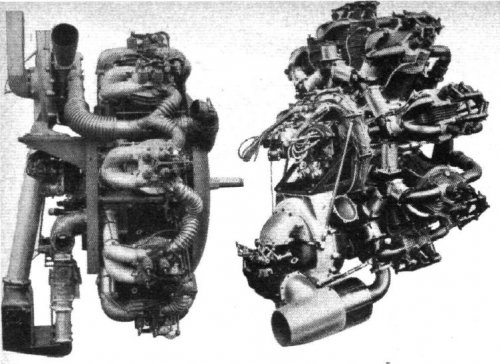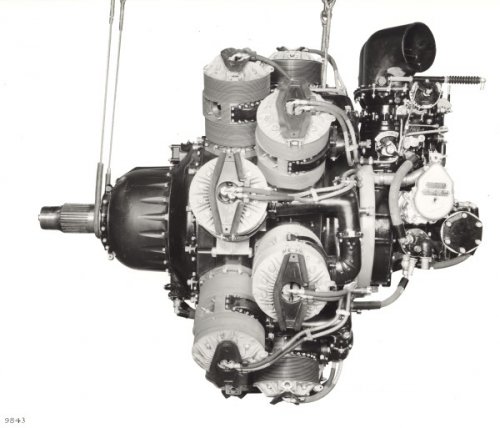- Joined
- 31 May 2006
- Messages
- 657
- Reaction score
- 440
I hope the moderators won’t mind me posting this here – the ‘Engines’ forum seems to be only about jets.
There is some info about a Bristol aero engine named the Orion in 'Fedden - The Life of Sir Roy Fedden' by Bill Gunston published by the Rolls Royce Heritage Trust. Pages 244 - 248 has information, diagrams and comparative drawings of both the Orion and a 4 row 28 cylinder 5 3/4 in bore by 7 in stroke engine.
The Orion was basically a bigger Centaurus, ie 18 cylinders in two rows of nine, 6 1/4 in bore and 7 1/2 in stroke. It was expected to achieve 4000hp.
The unnamed 28 cylinder does not appear to be a 'corncob' design from the diagram, it looks similar to the BMW 803 layout - ie row 3 is directly behind row 1 and row 4 is directly behind row 2. However, although it has Centaurus bore and stroke, 28 cylinders means 4 rows of 7 rather than 4 rows of nine so there is more room for the air to circulate. It is also noticable that the cowling outline is well clear of the cylinder heads - again giving more circulation room - whereas Hercules, Centaurus and Orion were (or were to be) very closely cowled.
Here are links to the drawings of the Orion, 28 cylinder engine and a couple of other interesting tidbits from 'Fedden - The Life of Sir Roy Fedden' by Bill Gunston. A fascinating book, I recommend it.
I apologise for the large file sizes but there is a lot of detail and some tiny printing I thought might be useful.
http://i115.photobucket.com/albums/n291/nsumner/PP246top.jpg
http://i115.photobucket.com/albums/n291/nsumner/PP246lower.jpg
http://i115.photobucket.com/albums/n291/nsumner/PP247top.jpg
http://i115.photobucket.com/albums/n291/nsumner/PP247lower.jpg
http://i115.photobucket.com/albums/n291/nsumner/PP255.jpg
Obviously this is copyright material so personal use only!
There is some info about a Bristol aero engine named the Orion in 'Fedden - The Life of Sir Roy Fedden' by Bill Gunston published by the Rolls Royce Heritage Trust. Pages 244 - 248 has information, diagrams and comparative drawings of both the Orion and a 4 row 28 cylinder 5 3/4 in bore by 7 in stroke engine.
The Orion was basically a bigger Centaurus, ie 18 cylinders in two rows of nine, 6 1/4 in bore and 7 1/2 in stroke. It was expected to achieve 4000hp.
The unnamed 28 cylinder does not appear to be a 'corncob' design from the diagram, it looks similar to the BMW 803 layout - ie row 3 is directly behind row 1 and row 4 is directly behind row 2. However, although it has Centaurus bore and stroke, 28 cylinders means 4 rows of 7 rather than 4 rows of nine so there is more room for the air to circulate. It is also noticable that the cowling outline is well clear of the cylinder heads - again giving more circulation room - whereas Hercules, Centaurus and Orion were (or were to be) very closely cowled.
Here are links to the drawings of the Orion, 28 cylinder engine and a couple of other interesting tidbits from 'Fedden - The Life of Sir Roy Fedden' by Bill Gunston. A fascinating book, I recommend it.
I apologise for the large file sizes but there is a lot of detail and some tiny printing I thought might be useful.
http://i115.photobucket.com/albums/n291/nsumner/PP246top.jpg
http://i115.photobucket.com/albums/n291/nsumner/PP246lower.jpg
http://i115.photobucket.com/albums/n291/nsumner/PP247top.jpg
http://i115.photobucket.com/albums/n291/nsumner/PP247lower.jpg
http://i115.photobucket.com/albums/n291/nsumner/PP255.jpg
Obviously this is copyright material so personal use only!


